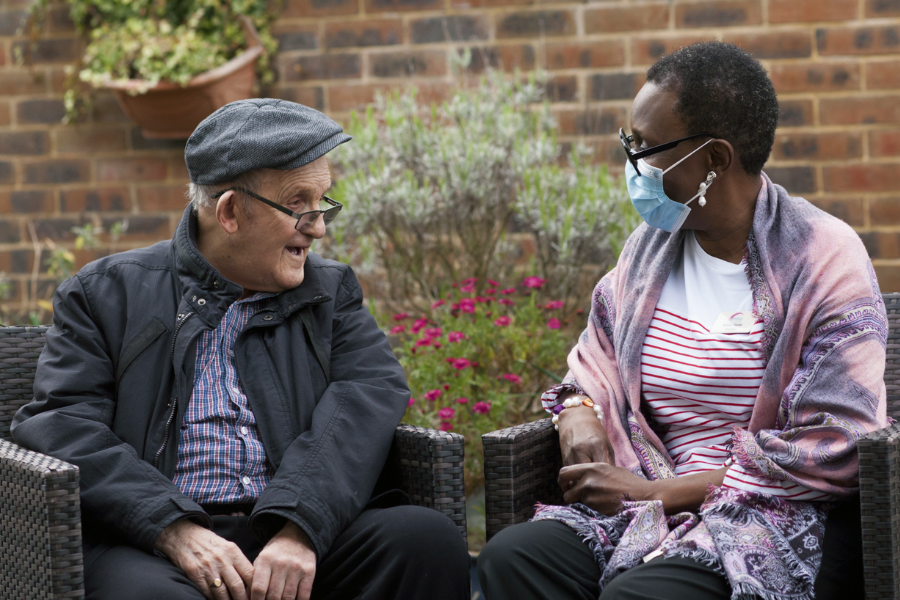- A
- A
- A
Worship Engagement in Later Life (WELL)
Our WELL programme is designed for faith and community leaders to improve understanding and to help deliver religious services for older people living with dementia.
Worship Engagement in Later Life (WELL)
Our Worship Engagement in Later Life (WELL) programme is designed for faith and community leaders to improve understanding and to help deliver religious services for older people living with dementia.
Offering tips, insights, and resources, this video tutorial will help you discover ways in which older people can be drawn into worship in services that understand and respect their needs.
Underpinned by our years of experience and with research, the WELL training focuses on worship as a positive experience. Showing the importance of music, familiar stories, community, and ritual, which all enable people to live later life well.
If you would like someone from MHA to lead a WELL workshop for your church or group of churches, please contact us at chaplaincy@mha.org.uk
Watch our video on YouTube
Ten steps to organise a dementia inclusive worship service
1. How should I prepare for a service?
Before preparing the service you’ll need to choose a theme. You might want to use the lectionary but it’s important to go with whatever feels appropriate for the group you’ll be leading.
Think about books – Bibles and hymnbooks – will you use them? How easy are they to hold and read? Are there volunteers or members of staff who will be able to help?
2. How should I approach the content of the service?
You may well have a wide variety of people in the service – different physical and cognitive abilities with differing church experiences. All these factors will affect the way you plan the service. In choosing hymns, try to find out what’s familiar and if there are any particular favourites.
3. How should I decorate the venue?
In a care home, the way you prepare the room will send visual cues to the residents about what is going to happen. Visual aids will mark out the worship area and can also show something about the theme or the time of year.
4. How should I use music throughout the service?
As well as hymns during the service, you can also use music before and after. Playing quiet reflective music before the service begins will help create the right atmosphere and will add to the visual cues you’re providing.
After the service, you could repeat the last hymn or use the opportunity to play a favourite hymn of one of the residents.
5. How should I dress for a service?
Dress to be smart but comfortable. In a care home, some ordained ministers will wear a clerical collar, but many don’t and the residents may well be used to seeing their Chaplain without a collar.
6. How should I welcome residents and family members?
As people gather, it’s good to be able to greet them informally, including family members. Think about who might need help during the service and have a spare chair next to them for a volunteer or staff member.
When the service begins, you can introduce everyone who will be taking part and repeat their names during the service.
7. How can I empower residents to feel involved?
Residents’ involvement will vary according to their wishes, ability, and tradition. Some will join in the singing and may be able to use the hymn book or residents might want to bring their own books.
Others could hold a holding cross or something similar and some may be drawn to a candle flame (you can use a battery-operated version if you feel this is safer). Try to encourage residents to join in sharing The Peace.
8. How can I keep residents engaged throughout the service?
Keep the service short, 30 to 40 minutes maximum will be long enough. Prayers should be concise and straightforward. Rather than an in-depth sermon, have a clear five-minute reflection. If there are interruptions, try and go with the flow and be flexible.
9. How should I close the service?
As you would in Church, say a blessing or grace to mark the end of the service and play some music. After the service has finished, it is a good time to talk with all the residents and any family and staff members who have been present. Many places will have refreshments after the service which gives plenty of time for conversation.
10. Why is it important to have a debrief?
If you can, it’s helpful to talk over the service with all those who helped. Think about what went well and what didn’t go so well so you can work on what you might do differently next time. If any of the residents were upset in the service, think about how you could give them some extra support next time.

Our WELL video
Offering tips, insights, and resources, this video tutorial will help you discover ways in which older people can be drawn into worship in services that understand and respect their needs.
Watch Now